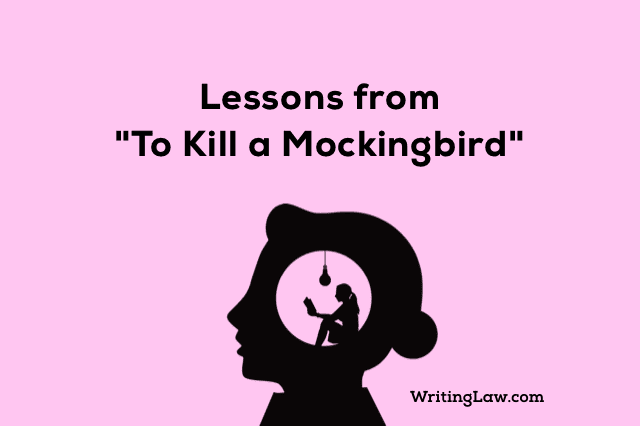
Law students are often advised to read books as much as they can. I remember entering my college library’s fiction section on the 1st day itself. The book that caught my attention amongst many others was “To Kill a Mockingbird” by Harper Lee. It was written in 1960, and the writer was awarded Pulitzer Prize for the same. The book has been cited over 65 times in American courts.
The story of To Kill a Mockingbird revolves around racial discrimination faced by black people around the world. The story’s main character is Scout Finch, daughter of a principled and courageous attorney, Atticus Finch (a white man). Atticus mostly fought cases of the destitute (needy) and hence is poor. He is a widower with 2 children and emphasises teaching major life lessons to his kids throughout the novel.
The major lessons by Atticus Finch to his kids in “To Kill a Mockingbird” can be divided into 4 parts. These lessons are:
1. Put Yourself in Other People’s Shoes
One should not judge a book by its cover. To understand a person’s circumstances, we must empathise with them. One Arthur Ridley, who the children never saw outside the house, was perceived as an ugly person. But as the story unfurls, one can easily notice his act of care for the children. Yet, he decides to remain a recluse (a person who lives a solitary life and tends to avoid other people). Scout experienced this lesson towards the end of the novel.
2. Don’t Kill Mockingbirds
You may kill all the birds you want but not mockingbirds as they don’t harm any plants or anyone’s farms. All these birds do is make music.
The metaphorical meaning for the term “Mockingbird” is anyone who is weak and defenceless. As presented in the novel, the people of colour were treated as unequal. They were given petty jobs and negligible wages. Most of the time they were not even paid. They stayed in a settlement at the outskirts of the County where white people lived. Thus, the protagonist’s aunt tells her that no one should take advantage of someone weaker than them.
3. Keep Fighting Even if You Know You Will Lose
The 2nd part of the book involves a character named Tom Robinson. Tom was a black man who had been arrested and charged for raping a white woman. Atticus was appointed as his defence attorney. Due to prevailing racism in the 1930s, when this novel was premised, he was bound to lose the case no matter how convincingly he presented his arguments.
Atticus’s children were mocked for he was fighting a black man’s case. But he reminded them to keep fighting and persevering in the face of adversity. Even after all the shreds of evidence led to the innocence of Tom, Atticus knew that a white jury was never going to acquit a black man accused of raping a white woman.
4. The World Is Very Unfair
The children of Atticus were highly disappointed at the conviction of Tom. They learnt that even the justice system was tainted by unfairness. The man against whom Atticus was arguing the case wanted to kill his children, but Arthur saved them. Arthur, in turn, ends up killing the attacker.
The Sheriff decides to cover up the murder as an accidental fall. Atticus fears that his children might see this as a bend in law just after they witnessed a victim of racism. But Scout tells Atticus that she understands that making a hero out of Arthur would only invite unsolicited attention.
The best gift for saving her life to Arthur would be to let him keep his privacy. To Kill a Mockingbird would be the biggest sin. Despite seeing the unfairness of life, Scout has seen its fairness as well.
Read: Restrictions on Advocates to Take Up Other Employment
Wrapping It Up
To Kill a Mockingbird is an interesting read for law students to begin with. It covers many facets of society such as racism, inequality, untouchability, slavery, discrimination and injustice.
Even after 8 decades of this book, one can still experience such taboo in society. The most recent movement experienced around the world is Black Lives Matter. The law students should also go through Atticus Finch’s unsparing cross-examination presented in the novel to learn this art.
Reading becomes a way of life for lawyers and law students, so why not pick a fiction that solves two purposes at the same time.
Check Out “To Kill a Mockingbird” on Amazon
You’ll also love:
1. 32 Duties of an Advocate
2. Art of Cross-Examination in Court
3. Difference Between a Lawyer, Advocate, Barrister and Attorney
- Role and Duties of Indian Prime Minister Are Written or Decisive? - 3rd January 2023
- Role and Function of Central Vigilance Commission of India - 25th December 2022
- What Are the Roles and Functions of the Cabinet Secretariat? - 24th December 2022







